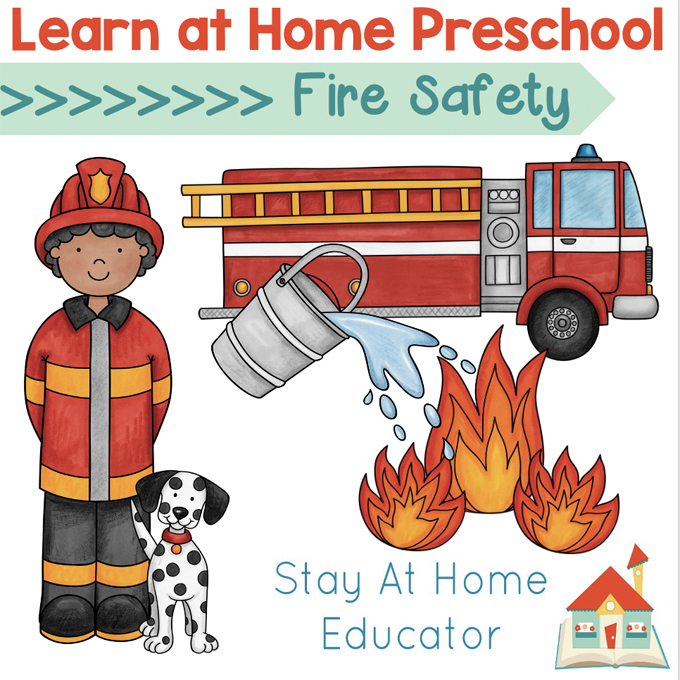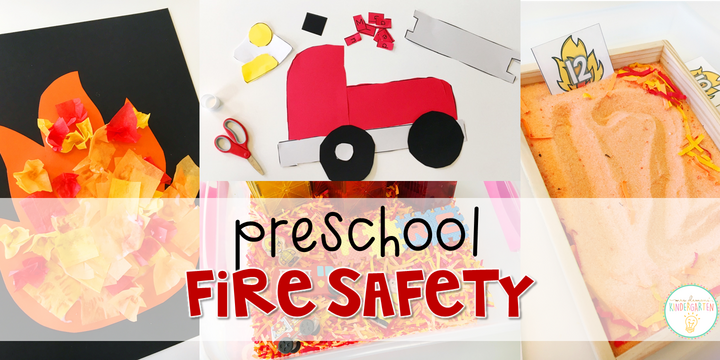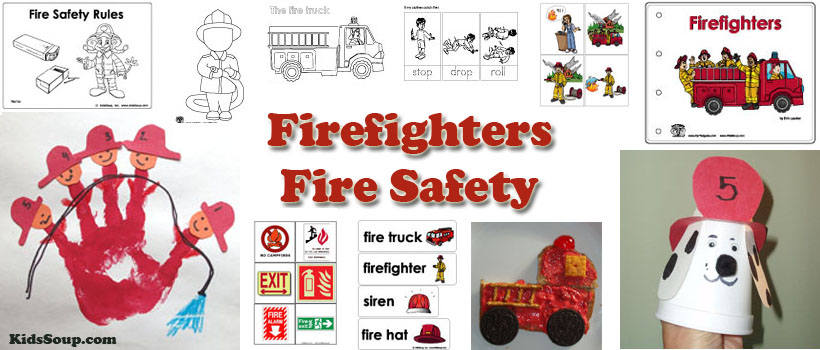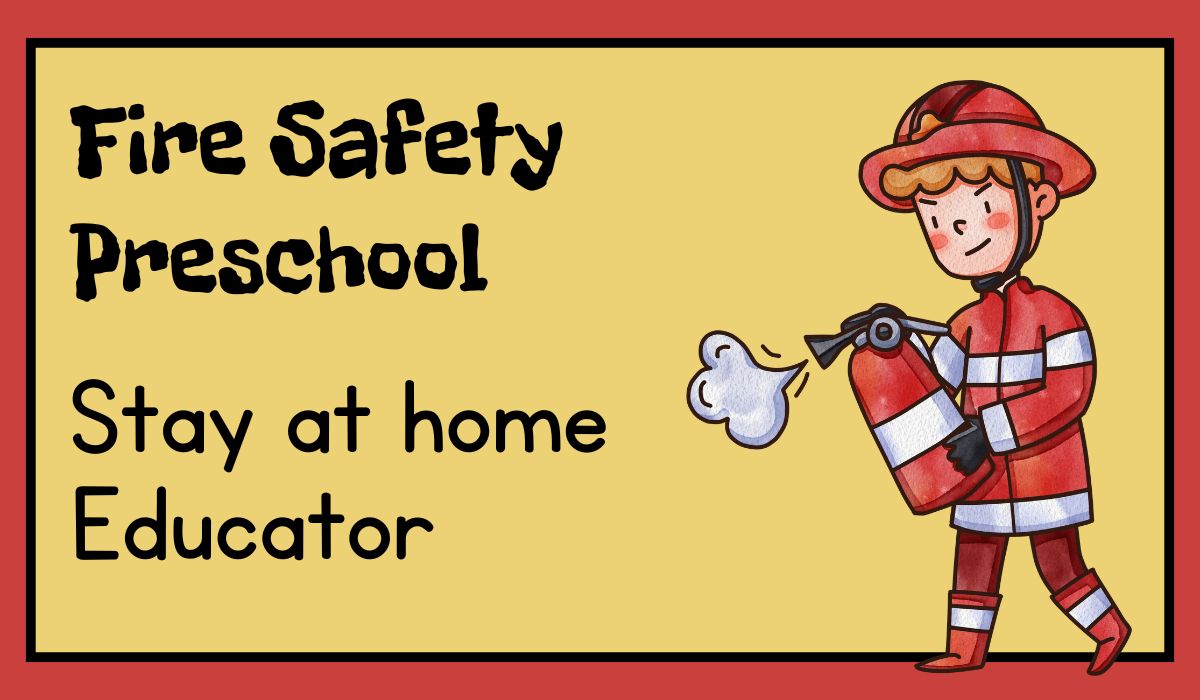Fire safety education is crucial for preschoolers. Teaching them basic fire safety rules can save lives.
Preschoolers are naturally curious and eager to learn, making it an ideal time to introduce fire safety concepts. Simple lessons about not playing with matches, understanding the sound of a smoke alarm, and learning to stop, drop, and roll can significantly impact their safety.
Engaging activities, such as fire drills and storytelling, can reinforce these important lessons. Parents and teachers should collaborate to create a consistent message about fire safety. By starting early, we can instill lifelong habits that will help children respond appropriately in emergencies. Investing in fire safety education for preschoolers is an essential step in safeguarding their future.

Introduction To Fire Safety
Fire safety is essential knowledge for everyone, especially preschoolers. Teaching young children about fire safety can save lives. Educators play a crucial role in this. Understanding fire safety helps children react correctly in emergencies.
Importance For Preschoolers
Preschoolers are curious and often unaware of dangers. Teaching fire safety at an early age can help prevent accidents. Knowing what to do in a fire can reduce panic and confusion.
- Awareness: Kids learn to recognize fire hazards.
- Reaction: They understand how to react during a fire.
- Prevention: They learn ways to avoid starting fires.
Children should know basic fire safety rules. These include “Stop, Drop, and Roll” and how to call emergency services. These simple guidelines can make a big difference.
Role Of Educators
Educators have a significant role in teaching fire safety. They can use engaging activities to make learning fun. Storytelling, role-playing, and interactive games are effective methods.
| Method | Benefit |
|---|---|
| Storytelling | Helps children remember lessons through engaging narratives. |
| Role-playing | Allows kids to practice safety skills in a controlled environment. |
| Interactive Games | Makes learning about fire safety enjoyable and memorable. |
Educators should also involve parents. They can provide resources for home safety drills. Constant reinforcement helps children retain crucial information.

Basic Fire Safety Rules
Teaching fire safety to preschoolers is vital. They need to know how to stay safe. Here are some basic fire safety rules for young children.
Stop, Drop, And Roll
If your clothes catch fire, do not panic. Stop where you are. Drop to the ground. Roll over to smother the flames. This simple action can save your life. Practice this with children. Make it a fun game. They will remember it better.
Importance Of Staying Low
Smoke rises during a fire. It is dangerous to breathe. Tell children to stay low. Crawl on their hands and knees. This helps them avoid smoke. It is safer to breathe near the floor. Practice this with them. Make it a fun activity.
| Rule | Action |
|---|---|
| Stop, Drop, and Roll | Stop, drop to the ground, and roll over to put out flames. |
| Staying Low | Crawl on hands and knees to avoid smoke. |
- Stop immediately if clothes catch fire.
- Drop to the ground quickly.
- Roll over to smother flames.
- Tell children to stay low during a fire.
- Have them crawl on their hands and knees.
- This avoids harmful smoke and helps them breathe safely.
Identifying Fire Hazards
Teaching preschoolers about fire safety is crucial. They need to know how to identify fire hazards. This knowledge can save lives and prevent accidents. Let’s explore the common household hazards and how to recognize danger signs.
Common Household Hazards
- Electrical Outlets: Kids should not touch or play with outlets.
- Stoves and Ovens: Hot surfaces can cause burns and start fires.
- Candles: Keep lit candles out of reach of children.
- Matches and Lighters: Store these items in high, locked cabinets.
- Portable Heaters: These should be kept away from curtains and furniture.
Recognizing Danger Signs
Kids must learn to recognize danger signs. This can help them act quickly and stay safe. Here are some important signs to look for:
- Smoke: Smoke means something is burning. Get out and call for help.
- Strange Smells: If you smell something burning, tell an adult.
- Warm or Hot Door Handles: Do not open a door if the handle is hot.
- Beeping Smoke Alarms: If you hear this sound, follow your fire safety plan.

Credit: mrsplemonskindergarten.com
Emergency Evacuation Plan
Having an emergency evacuation plan is crucial for preschool safety, as kids need to know how to exit quickly and safely in an emergency. This plan teaches them to stay calm and follow instructions.
Creating A Safe Exit
Preschools need clear, safe exit routes. These exits should be easy for kids to reach. Make sure exits are not blocked by furniture or toys.
Use bright signs to mark exit doors. These signs should be at kids’ eye level. Every room should have at least two exits. This way, kids can leave safely if one exit is blocked.
| Room | Exit 1 | Exit 2 |
|---|---|---|
| Classroom A | North Door | East Door |
| Classroom B | West Door | South Door |
Practice Drills
Practice drills are key to a good evacuation plan. They help kids remember what to do in an emergency. Plan drills once a month to keep kids prepared.
During drills, teachers should use simple, clear instructions. Use a whistle or bell to start the drill. Teachers should lead kids to the nearest exit calmly.
- Sound the alarm.
- Line up at the door.
- Walk to the nearest exit.
- Meet at the safe spot outside.
After each drill, talk to the kids about what went well. Discuss any problems and how to fix them. This helps kids feel confident and ready.
Using Fire Safety Equipment
Teaching preschoolers about fire safety equipment is crucial. It helps keep them safe and aware. Let’s dive into two important tools: fire extinguishers and smoke alarms.
Fire Extinguishers
Fire extinguishers are essential for putting out small fires. Preschoolers should know what they look like. Show them a real fire extinguisher or a picture. Explain that adults use fire extinguishers to stop fires quickly.
Teach them the PASS method:
- Pull the pin.
- Aim the nozzle at the base of the fire.
- Squeeze the handle.
- Sweep from side to side.
Use simple words and actions. Practice with a toy extinguisher. This helps them remember better.
Smoke Alarms
Smoke alarms detect smoke and warn us of fire. Show preschoolers where smoke alarms are in your home. Point out the round, white device on the ceiling.
Explain that smoke alarms make a loud noise. This noise tells us to get out quickly. Test the smoke alarm so they can hear the sound. Explain that they should never touch or play with smoke alarms.
Every home should have enough smoke alarms. Place them in key areas, such as:
- Bedrooms
- Hallways
- Living rooms
Regularly check the batteries to ensure they work. Make it a monthly habit.
With these simple tips, preschoolers can learn fire safety. They will know what to do and stay safe.
Teaching Through Play
Teaching fire safety to preschoolers can be challenging. They often have short attention spans and learn best through play. By using interactive games, storytelling, and role-playing, we can make learning about fire safety fun and engaging.
Interactive Games
Interactive games are a fantastic way to teach children about fire safety. These games can be both educational and entertaining.
- Fire Drill Practice: Teach children how to respond during a fire drill.
- Fire Safety Bingo: Use bingo cards with fire safety symbols.
- Stop, Drop, and Roll: Make a game out of this life-saving technique.
Children love games. They learn essential skills while having fun. Interactive games help reinforce fire safety lessons.
Storytelling And Role-playing
Storytelling and role-playing bring fire safety lessons to life. Kids can better understand and remember the lessons.
- Storybooks: Use books that focus on fire safety themes.
- Role-Playing: Act out what to do in case of a fire.
- Puppet Shows: Use puppets to demonstrate fire safety tips.
Children can act out different scenarios. They can practice what to do if they see smoke or hear a fire alarm. Role-playing helps them feel prepared and confident.
Using these playful methods, children learn vital fire safety skills. They remember these lessons and apply them in real life.
Parental Involvement
Parental involvement is crucial in teaching fire safety to preschoolers. Engaging parents ensures children learn and practice safety at home. Parents can reinforce lessons and create safe environments.
Home Safety Checklist
Creating a home safety checklist helps parents identify potential fire hazards. Use the checklist to inspect your home regularly. Here’s a sample checklist:
| Safety Item | Check |
|---|---|
| Smoke Detectors | ✔ |
| Fire Extinguisher | ✔ |
| Escape Routes | ✔ |
| Electrical Hazards | ✔ |
| Kitchen Safety | ✔ |
Review the checklist with your child. Explain each item and its importance. Make it a habit to review this regularly.
Reinforcing Lessons At Home
Reinforce fire safety lessons at home through fun activities. Try these activities with your preschooler:
- Fire Drill Practice: Conduct regular fire drills. Show escape routes and meeting points.
- Story Time: Read books about fire safety. Discuss the stories afterward.
- Role-Playing: Act out different fire safety scenarios. Let your child practice calling 911.
These activities make learning fun and memorable. Repetition helps children remember crucial safety steps.
Parents play a key role in teaching fire safety. Being involved ensures children learn effectively and stay safe.
Resources For Educators
Fire safety is crucial for everyone, especially young children. Educators need the right resources to teach fire safety effectively. This section offers valuable tools and information for preschool teachers.
Educational Materials
Teachers need engaging materials to teach fire safety. Here are some useful resources:
- Coloring Books: Fun way to learn safety rules.
- Posters: Visual aids to reinforce key messages.
- Storybooks: Stories that teach fire safety in an engaging way.
Interactive materials can make lessons more effective. Consider using:
- Flashcards: Quick and easy learning tools.
- Puzzles: Make learning fun and interactive.
- Videos: Visual and auditory learning aids.
Workshops And Training
Workshops and training sessions equip educators with the necessary skills. Here are some options:
- Local Fire Department Training: Hands-on training from professionals.
- Online Courses: Flexible learning at your own pace.
- Safety Drills: Practice real-life scenarios.
Regular training ensures teachers stay updated. Consider these additional resources:
- Webinars: Learn from experts without leaving the classroom.
- Seminars: In-depth learning opportunities.
- Workshops: Practical, hands-on training sessions.

Frequently Asked Questions
How Do You Explain Fire Safety To Preschoolers?
Explain fire safety using simple words. Teach them to stay away from matches and lighters. Show them how to stop, drop, and roll. Practice fire drills regularly. Emphasize the importance of listening to adults during emergencies.
What Are The Questions For Fire Safety For Preschoolers?
What is fire? How do you call for help? What should you do if you see smoke? Why is “Stop, Drop, and Roll” important?
What Are The 10 Fire Safety Rules?
1. Install smoke alarms on every level. 2. Test alarms monthly. 3. Create a fire escape plan. 4. Practice the plan twice a year. 5. Keep flammable items away from heat sources. 6. Never leave cooking unattended. 7. Use space heaters safely.
8. Store matches and lighters securely. 9. Avoid overloading electrical outlets. 10. Teach children fire safety.
What Are The Abcs Of Fire Safety?
The ABCs of fire safety are: A – Activate the alarm, B – Be aware of exits, C – Contain and control the fire.
Conclusion
Teaching fire safety to preschoolers is crucial. It builds awareness and ensures they know how to react in emergencies. By integrating fun activities and simple lessons, we can make fire safety education effective and memorable for young minds. Start today, and help create a safer environment for our children.

I’m Abdus Sobur, a highly skilled and professional Fire Safety Officer with a passion for safeguarding lives and property. Over the course of my career, I’ve conducted numerous successful fire safety audits, earning a reputation for excellence in ensuring public safety.
In addition to my role as a Fire Safety Officer, I’m also dedicated to raising awareness about the importance of fire safety. Through my blog, I share insights into the functions of different fire safety equipment, aiming to empower individuals with the knowledge they need to protect themselves and their communities.
I’m driven by a deep commitment to promoting fire safety awareness and preventing fire-related incidents.

